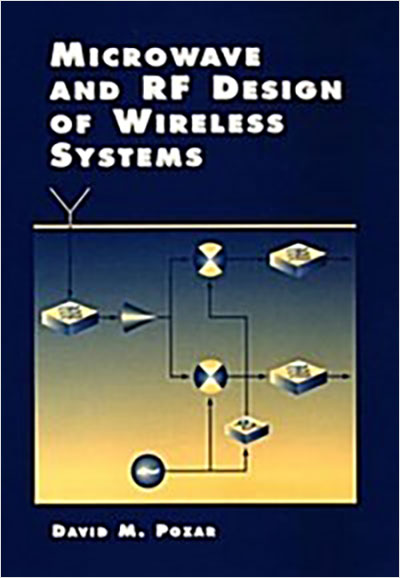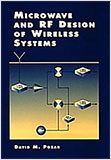
David Pozar, author of Microwave Engineering, Second Edition, has written a new text that introduces students to the field of wireless communications. This text offers a quantitative and, design-oriented presentation of the analog RF aspects of modern wireless telecommunications and data transmission systems from the antenna to the baseband level. Other topics include noise, intermodulation, dynamic range, system aspects of antennas and filter design.
This unique text takes an integrated approach to topics usually offered in a variety of separate courses on topics such as antennas and proagation, microwave systems and circuits, and communication systems. This approach allows for a complete presentation of wireless telecommunications systems designs.
The author's goal with this text is for the student to be able to analyze a complete radio system from the transmitter through the receiver front-end, and quantitatively evaluate factors.
Suitable for a one-semester course, at the senior or first year graduate level. Note certain sections have been denoted as advanced topics, suitable for graduate level courses.
New feature
Undersztand every aspect of modern wireless system design
From the antenna to the baseband level - David Pozar's MICROWAVE AND RF DESIGN OF WIRELESS SYSTEMS offers ther most completer and up-to-date presentation of the operation and design of modern wireless telecommunication systems.
Integrating a wide range of topics into one design-oriented framework, the text covers antennas and propagation, noise characterization of systems and components, digital modulation methods, and the design and operation of wireless components such as filters, amplifiers, mixers, and phase-locked loops. This comprehensive approach helps readers understand how the various technologies involved in wireless systems are interrelated.
The text builds on a strong foundation of fundamental principles, and offers many practical examples and design problems. You'll learn how to:
Design modern wireless telecommunication and data transmission systems.
Analyze a complete radio system, from the transmitter through the receiver front-end.
Evaluate factors such as carrier-to-noise ratio, receiver noise figure, intermodulation products, spurious mixer products, image frequencies, dynamic range, Rayleigh fading, bit error rate, and maximum data rate.'Solve real-world, design-oriented problems.
Introduction to Wireless Systems.
Transmission Lines and Microwave Networks.
Noise and Distortion in Microwave Systems.
Antennas and Propagation for Wireless Systems.
Filters.
Amplifiers.
Mixers.
Transistor Oscillators and Frequency Synthesizers.
Modulation Techniques.
Receiver Design.
Appendices.
Index.
도서구입 안내
<한빛아카데미> 도서는 한빛 홈페이지에서 더 이상 판매를 하지 않습니다. 도서 구입은 인터넷 서점을 이용하시기 바랍니다. 양해바랍니다.




